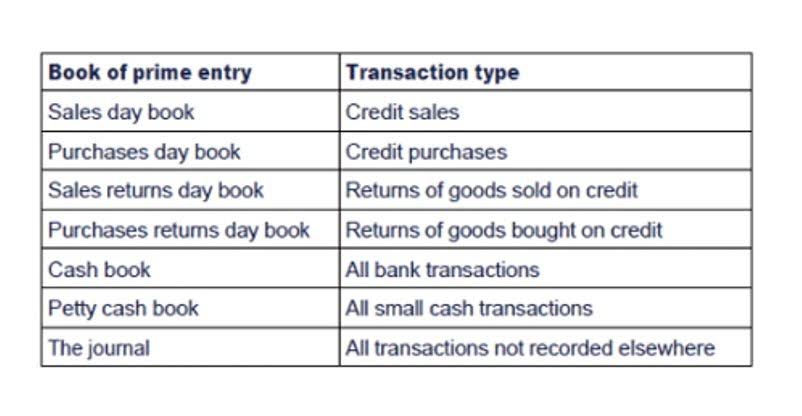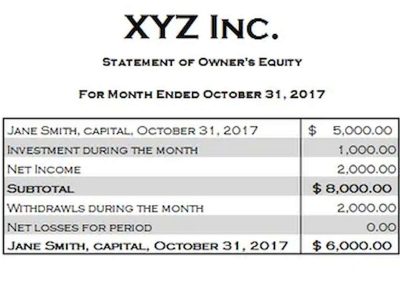If the home has new shutters and a new roof, you might consider setting aside some of your own money to pay for potential damage and save $20,000 in a given year. The states with the highest home insurance costs are prone to severe weather events. Arkansas, Florida, Louisiana, Mississippi and Texas are vulnerable to hurricanes, Insurify said. California, Colorado, Nebraska and Texas face growing wildfire risk, it said. It is essentially a measure of lack of quality & can also be termed as cost of bad quality. Also the ROI norms for sanctioning the capital expenses put a sealing of one year ROI for any major expense.
Understanding the Components of the Cost of Quality (COQ)
The non-conformance costs are the costs incurred because of products that do not meet quality standards. Examples of non-conformance costs include the cost of rework, scrap, and warranty claims. Failure costs can be significantly higher than prevention and appraisal costs, making them a critical focus area for quality improvement efforts. Businesses can save resources and enhance customer satisfaction by reducing failure costs through effective prevention and appraisal activities. The central theme of quality improvement is that larger investments in prevention drive even larger savings in quality-related failures and appraisal efforts.
Cost of Quality in Project Management
Finally, she added all the costs together to find the total cost of quality. Let’s look at how to calculate the cost of quality for a fictional company called Headphones Inc. This may involve reviewing financial records, invoices, payroll data, maintenance logs, customer complaints, and warranty claims. Use financial and operational data sources to ensure accuracy and completeness. Here is a chart showing some of the hidden costs of quality that most organizations aren’t aware of.
What is COQ?
Add the prevention, appraisal, and failure costs (internal and external) to derive the comprehensive COQ figure. These activities aim to ensure the app is high quality and meets customer requirements. COQ is about money, time, and resources to ensure product or service delivery excellence. Crosby felt that the only performance measure a business should have is COQ. His research over the years showed that most companies will spend between 15%-20% of their annual sales on quality costs.
Gain control of quality escapes and costs
It’s also part of Lean Six Sigma, a philosophy of improvement built on the prevention of defects over defect detection. The most important thing to remember when using these metrics is that you shouldn’t compare apples to apples. In other words, only compare the cost of quality for products that are similar in terms of complexity, size, and other factors. Otherwise, you will not be able to accurately gauge the financial impact of defects or failures in quality. While many organizations claim to produce or deliver high-quality products and services, do they understand that it isn’t really free?
- Several standardized quantitative methods are available for you to maintain consistency and precision in cost quantification.
- Finally, employ quality management tools and techniques to streamline COQ measurement.
- Examples of non-conformance costs include the cost of rework, scrap, and warranty claims.
- The states with the highest home insurance costs are prone to severe weather events.
Understanding the impact of cost of quality generally leads to better bottom-line performance
Reverse osmosis and nanofiltration are proven water treatment processes utilized throughout the world including in many homes in Kaukauna. The enhanced treatment process will significantly reduce water hardness for residents and businesses in the city. COQ (Cost of quality) is a financial measure of the quality performance of an organisation.
Identify Cost Categories
Regularly review and monitor the COQ metrics to track progress, evaluate the effectiveness of quality improvement initiatives, and identify emerging quality-related issues. Cost of quality refers to costs incurred while ensuring that you get high-quality deliverables. This is different from the cost of production, which refers to the total amount spent on labour and materials.
The best way to implement cost of quality in project management is by gathering input data and developing a project quality management plan. Effective data analysis is required, followed by the process of establishing quality metrics. Next, you must perform quality assurance and control and devise an improvement plan to boost the quality.
By keeping a watchful eye on the Cost of Quality, businesses can identify potential areas for improvement, allocate resources judiciously, and optimize their overall performance. The worst-case scenario is that your customer becomes your inspection department, catches all the nonconformances and sends back all your defective products. The concept of COQ can be applied to any function in the organization. The additive effect of everyone focusing on lowering the COQ will provide the strategic foundation for becoming a successful organization. Nothing will destroy a relationship with your customer faster than continuously shipping them defective products. By investing wisely to reduce your COQ, you will not only have happier customers, but more profits.
It is a better way to ensure a defect-free product and save money than identifying quality issues after production. Effective cost of quality management requires a mindset of continuous improvement and a relentless pursuit of excellence. SPC tools, such as control charts and process capability studies, enable organizations to identify and address process variations proactively, reducing the likelihood of defects and quality issues. Over the years, various quality management frameworks and methodologies have been developed to help organizations enhance their quality processes and reduce defects. To effectively track and analyze quality costs, organizations must establish robust data collection and monitoring systems.
The proven cost-benefits of quality demonstrate its designation as an investment rather than mere business function. Throughout this comprehensive guide, we have explored the fundamental aspects of it equipment methodology. In regulated industries, such as healthcare, pharmaceuticals, and aerospace, adherence to quality standards and regulatory requirements is essential. RCA methodologies, such as the 5 Whys and Ishikawa (fishbone) diagrams, can help organizations implement effective and sustainable solutions to quality challenges. Fortunately, there are well-established formulas and methodologies that organizations can employ to gain valuable insights into their quality-related expenses.
By consistently delivering high-quality products or services, organizations can build a strong brand reputation that fosters customer loyalty and trust. Once you’ve made these calculations, you’re in a better position to plan your project with the necessary resources. But you still need a quality assurance plan to make sure you’re meeting those quality expectations.
This not only enhances individual performance but also contributes to a shared understanding of quality goals and objectives. It recognizes that quality isn’t just about detecting and remedying defects; it’s about proactively https://www.business-accounting.net/ preventing them from occurring in the first place. Quality has taken on new significance in today’s competitive business landscape – it is now a strategic necessity that can determine an organization’s very survival.
Prevention costs includes all those costs which are incurred for activities that are specifically designed to prevent poor product quality from happening in the first place. It is much less expensive to prevent a problem from happening than it is to find and correct the problem after it has occurred.Prevention costs are incurred for activities whose purpose is to reduce the number of defects. Organizations employ many techniques to prevent defects, including statistical process control, quality engineering, and training.
Importing goods from overseas makes sense for many importers due to the low costs of production. However, this doesn’t matter much if you receive low-quality goods that you can’t sell to your customers. It is essential to take all the necessary steps to balance price and quality. Our free Price vs. Quality Guide gives deeper insight into how to navigate these waters. Armand V. Feigenbaum first described the concept of the cost of poor quality in a 1956 Harvard Business Review article. Her director of finance estimated that these costs were equal to about 18% of their yearly sales revenue, and most of the costs were not even being tracked on an ongoing basis.







